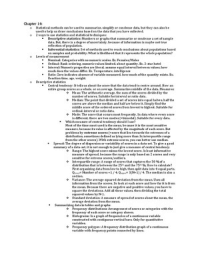Samenvatting
Summary Statistics Stenden University Year 2 International Hospitality Management
- Vak
- Statistics
- Instelling
- NHL Stenden Hogeschool (NHL)
Summary of the whole Statistics book of Stenden University. It contains the chapters 1-5, pages 3-160. It provides all the necessary knowledge of this book. Author received a 8,5 with this summary.
[Meer zien]





